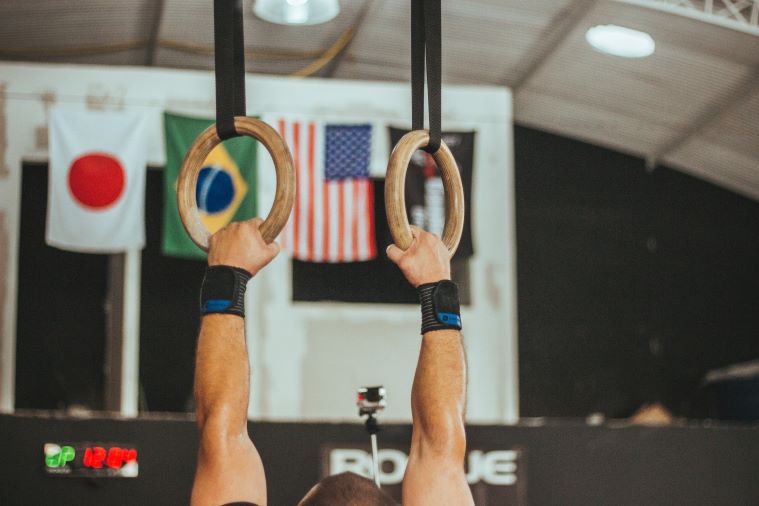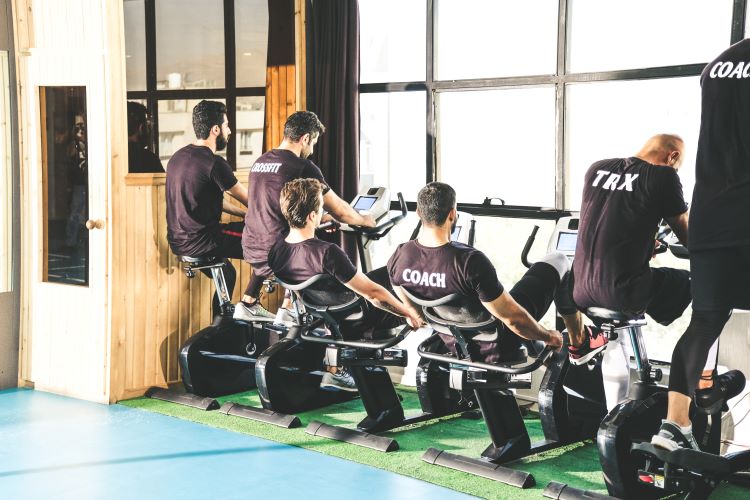CrossFit, a dynamic and intense form of exercise, has gained immense popularity for its ability to deliver comprehensive fitness results. However, a common question lingers: How many times per week should one engage in CrossFit to strike the perfect balance between progress and recovery?
Let’s Get Started..
CrossFit isn’t just a workout; it’s a lifestyle. It’s a high-intensity fitness program that combines elements of various exercise modalities to create a versatile and challenging routine. As enthusiasts delve into this fitness phenomenon, a crucial question arises: What’s the optimal frequency for CrossFit workouts?
Before determining the ideal frequency, it’s essential to grasp the fundamentals of CrossFit. At its core, CrossFit is about constantly varied functional movements performed at high intensity. The goal is to improve overall physical fitness, including cardiovascular health, strength, flexibility, and more.
Factors to Consider

A. Personal Fitness Goals
The frequency of CrossFit workouts significantly depends on individual fitness goals. Are you aiming for weight loss, muscle gain, or overall endurance? Understanding your objectives is the first step in tailoring your CrossFit routine.
B. Fitness Level and Experience
Beginners, intermediate practitioners, and advanced CrossFit enthusiasts have different requirements. Novices may need more recovery time, while seasoned athletes might benefit from more frequent, challenging sessions.
C. Recovery Time
One of the most overlooked aspects of CrossFit is recovery. Proper rest is vital to allow the body to repair and grow stronger. Ignoring recovery can lead to burnout and increased risk of injuries.
General Guidelines
CrossFit for Beginners
For beginners, starting with 2-3 sessions per week is advisable. This allows the body to adapt gradually to the intensity and reduces the risk of overtraining.
Intermediate CrossFit Practitioners
Intermediate participants can aim for 3-5 sessions per week, incorporating a mix of strength training, cardio, and skill-based workouts.
Advanced CrossFit Enthusiasts
Advanced individuals with specific performance goals might engage in 5 or more sessions per week, carefully balancing intensity and recovery.
Balancing Intensity and Rest
Importance of Rest Days
Rest days are not a sign of weakness but a crucial component of a successful CrossFit routine. They allow muscles to recover, reducing the risk of fatigue and injuries.
Avoiding Overtraining
Overtraining can hinder progress and increase the likelihood of injuries. Listening to your body and recognizing signs of overtraining is key to maintaining a sustainable workout frequency.
Listen to Your Body
Listening to your body is a fundamental aspect of optimizing your CrossFit experience. Pay attention to subtle cues like persistent fatigue, lingering soreness, and a decline in performance. These are signals that your body may need additional rest. Overtraining can hinder progress and increase the risk of injuries, so it’s crucial to strike a balance between pushing your limits and allowing for adequate recovery. Adjust your workout frequency based on these individualized responses, ensuring that your CrossFit journey remains sustainable, enjoyable, and conducive to long-term success. Remember, your body communicates its needs—heed those signals for a healthier and more effective fitness routine.
Personal Stories

Success Stories with Varied Frequencies
Real-life success stories highlight the diversity in CrossFit frequencies, emphasizing the importance of individualized approaches.
Challenges and Lessons Learned
Learning from challenges and setbacks is part of the CrossFit journey. Balancing frequency is a constant learning process.
Common Myths
Debunking common myths surrounding CrossFit frequency is essential for individuals to make informed decisions about their workout routines. One prevalent misconception is the belief that more is always better, leading to the idea that daily intense workouts yield optimal results. However, the reality is that adequate rest is crucial for muscle recovery and overall performance. Another myth is that CrossFit is exclusively for elite athletes, deterring beginners from embracing the program. In truth, CrossFit is adaptable to various fitness levels, with scalable workouts that cater to individual capabilities. Dispelling these misconceptions empowers individuals to approach CrossFit with accurate information, fostering a more inclusive and realistic understanding of its principles and benefits.
…
In conclusion, there is no one-size-fits-all answer to how many times per week one should do CrossFit. It’s a personal journey that requires self-awareness, adaptation, and commitment. By understanding your goals, listening to your body, and seeking guidance from experts, you can tailor your CrossFit frequency for optimal results.
Frequently Asked Questions
- Can I do CrossFit every day?
- While some advanced athletes may train daily, it’s generally advisable to incorporate rest days to prevent overtraining.
- How quickly will I see results with CrossFit?
- Results vary, but consistency and dedication to your CrossFit routine are key for noticeable improvements.
- Can beginners do advanced CrossFit workouts?
- Beginners should start with foundational workouts and gradually progress to more advanced exercises to avoid injury.
- Is CrossFit suitable for weight loss?
- Yes, CrossFit can be effective for weight loss when combined with a balanced diet and consistent workout routine.
- What should I do if I experience burnout?
- If you feel burnout, take a break, reassess your routine, and consider consulting a CrossFit coach for guidance.
Remember to, Flex at Ur Prime.





